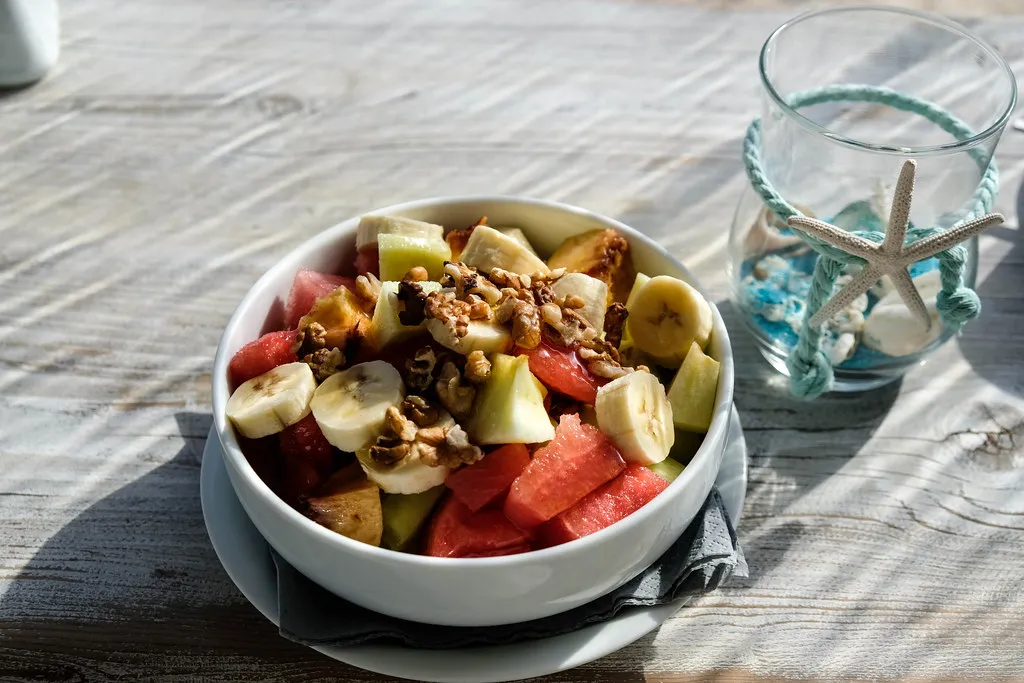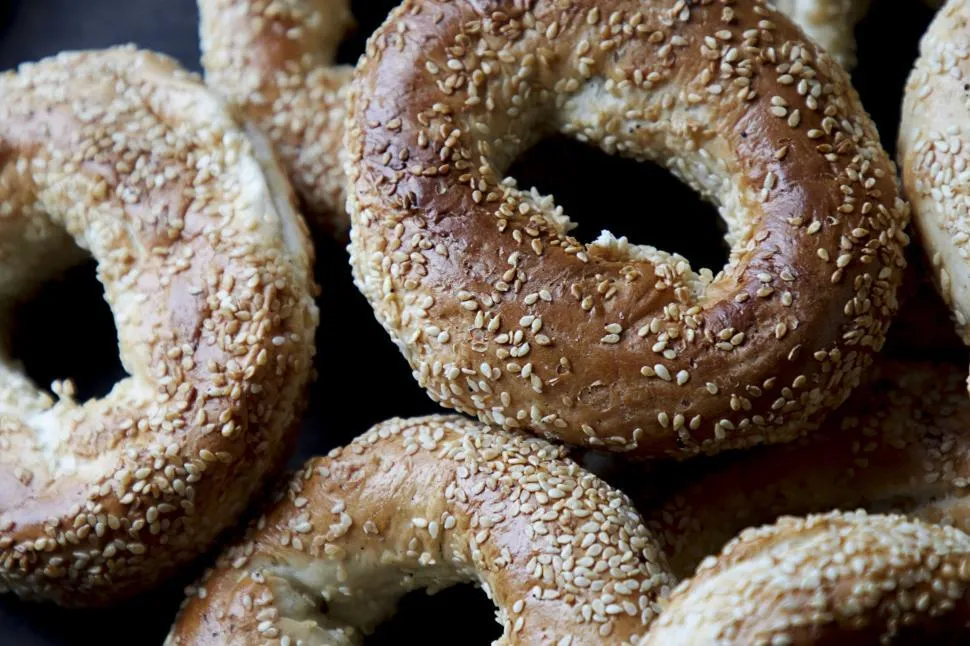The Best Fluffy Pancakes recipe you will fall in love with. Full of tips and tricks to help you make the best pancakes.
There’s something special about starting your day the Greek way—fresh, flavorful, and nourishing. A traditional Greek breakfast isn’t just about food; it’s a celebration of simple, wholesome ingredients that fuel your body and soul. From creamy Greek yogurt drizzled with honey to crispy koulouri sesame rings and flaky bougatsa pastries, every bite is a taste of the Mediterranean.
In this post, we’ll explore the most authentic Greek breakfast foods, easy recipes you can make at home, and the cultural traditions behind this morning ritual. Whether you’re looking for a healthy, high-protein breakfast or just want to indulge in a delicious Mediterranean morning, these Greek-inspired ideas will bring sunshine to your plate.
What Makes Greek Breakfast So Special?
Greek breakfast is more than just a meal—it’s a reflection of the Mediterranean lifestyle, emphasizing fresh, natural ingredients and balanced nutrition. Unlike the heavy, processed breakfasts found in many Western countries, Greek morning meals focus on simplicity, health, and tradition. But what exactly makes Greek breakfast stand out? Let’s explore the key elements that define this delicious and wholesome way to start the day.

1. The Mediterranean Diet and Its Health Benefits
Greek cuisine is deeply rooted in the Mediterranean diet, one of the healthiest eating patterns in the world. This diet prioritizes:
- Fresh fruits and vegetables – Tomatoes, olives, and citrus fruits often make their way into breakfast dishes.
- Healthy fats – Olive oil, nuts, and seeds provide essential nutrients.
- High-quality dairy – Greek yogurt and feta cheese offer protein and probiotics.
- Whole grains – Foods like koulouri (Greek sesame bread rings) and paximadia (Greek rusks) are rich in fiber.
These components not only make Greek breakfast satisfying but also contribute to heart health, weight management, and overall well-being. Research has consistently shown that the Mediterranean diet, which includes traditional Greek breakfast components, supports long-term health benefits, including heart health and weight management.
2. Traditional Ingredients Used in Greek Breakfasts
Greek breakfast features a variety of locally sourced, high-quality ingredients that give the cuisine its distinctive flavors. Some of the most common ingredients include:
- Greek Yogurt – Thick, creamy, and packed with protein, it’s often paired with honey and walnuts for a simple yet nourishing meal.
- Olive Oil – A staple in Greek cuisine, used in everything from breakfast toast to savory pies like spanakopita.
- Cheese and Dairy – Feta cheese, manouri, and anthotyro are popular choices, often served with fresh bread or olives.
- Honey – Greek honey, especially from Crete, is known for its rich taste and nutritional benefits.
- Nuts and Seeds – Almonds, walnuts, and sesame seeds add texture and nutrients to breakfast dishes.
These fresh and natural ingredients contribute to the authentic taste of a Greek breakfast while providing essential vitamins and minerals.
3. Importance of Fresh and Natural Foods in Greek Cuisine
Greek food culture places a strong emphasis on fresh, seasonal, and unprocessed ingredients. Whether it’s the juicy tomatoes of Santorini, the wild thyme honey from Crete, or the handmade phyllo dough used in pastries, Greek breakfasts rely on quality over quantity.
- Greeks often shop at local markets for the freshest produce and dairy.
- Homemade and traditional recipes are passed down through generations, keeping the authentic flavors alive.
- Preservatives and artificial additives are rarely used, making Greek breakfast a clean and nutritious way to start the day.
This dedication to freshness and simplicity is what makes Greek breakfast not only delicious but also incredibly healthy. Whether you’re enjoying a steaming cup of Greek coffee with a small honey-drenched pastry or a savory pie filled with spinach and feta, every meal is a celebration of natural flavors and time-honored traditions.
Classic Greek Breakfast Foods You Need to Try
Greek breakfasts are a perfect combination of savory and sweet flavors, using fresh, high-quality ingredients that reflect the Mediterranean way of life. Unlike heavy, processed breakfasts in other cultures, Greek morning meals focus on light yet satisfying options that provide energy and nourishment throughout the day.

Greek Yogurt with Honey and Nuts – A High-Protein, Probiotic-Rich Option
Ingredients:
- 1 cup Greek yogurt (full-fat or strained)
- 1-2 tablespoons Greek honey
- 2 tablespoons chopped walnuts or almonds
- Optional: Fresh fruit (figs, berries, or bananas)
Instructions:
- Place the Greek yogurt in a bowl.
- Drizzle with honey and mix gently.
- Sprinkle with chopped nuts for crunch.
- Add fresh fruit if desired.
- Serve immediately for a fresh, protein-rich breakfast.
For more yogurt breakfast bowl ideas, check out these recipes
Koulouri (Greek Sesame Bread Rings) – The Perfect On-the-Go Breakfast
Ingredients:
- 3 ½ cups all-purpose flour
- 1 cup warm water
- 1 packet (7g) dry yeast
- 2 tablespoons sugar
- 1 teaspoon salt
- ¼ cup olive oil
- ½ cup sesame seeds
- 1 egg (for egg wash)
Instructions:
- In a bowl, mix warm water, yeast, and sugar. Let it sit for 10 minutes until foamy.
- Add flour, salt, and olive oil, then knead into a soft dough. Cover and let rise for 1 hour.
- Preheat the oven to 375°F (190°C).
- Divide the dough into small pieces, roll them into long ropes, and form into circles.
- Brush with egg wash and sprinkle generously with sesame seeds.
- Bake for 15-20 minutes until golden brown.
- Serve warm or at room temperature with cheese, honey, or olives.
Bougatsa (Greek Custard Pastry) – A Sweet and Creamy Morning Treat
Ingredients:
- 1 package phyllo dough
- 3 cups whole milk
- ½ cup sugar
- ½ cup semolina flour
- 2 eggs
- 1 teaspoon vanilla extract
- ¼ cup butter (melted)
- Powdered sugar and cinnamon for topping
Instructions:
- Heat milk in a saucepan over medium heat. Add sugar and semolina, stirring constantly until thickened.
- Remove from heat, let cool slightly, then whisk in eggs and vanilla.
- Preheat oven to 375°F (190°C).
- Layer half of the phyllo sheets in a buttered baking dish, brushing each with melted butter.
- Pour the custard filling over the layers and top with the remaining phyllo sheets, brushing each with butter.
- Bake for 30-35 minutes until golden brown.
- Let cool slightly, then dust with powdered sugar and cinnamon before serving.
Spanakopita (Spinach and Feta Pie) – A Savory Breakfast Favorite
Ingredients:
- 1 package phyllo dough
- 2 tablespoons olive oil
- 1 onion, finely chopped
- 2 cloves garlic, minced
- 4 cups fresh spinach, chopped
- 1 cup feta cheese, crumbled
- 2 eggs, beaten
- 1 teaspoon dried oregano
- Salt and pepper to taste
- ¼ cup melted butter (for brushing phyllo)
Instructions:
- Preheat oven to 375°F (190°C).
- In a pan, heat olive oil and sauté onion and garlic until soft.
- Add spinach, cook until wilted, then remove from heat.
- Stir in feta cheese, eggs, oregano, salt, and pepper.
- Layer half of the phyllo sheets in a greased baking dish, brushing each with butter.
- Spread the spinach mixture evenly over the phyllo.
- Top with remaining phyllo sheets, brushing each with butter.
- Bake for 30-35 minutes until golden and crispy.
- Let cool slightly, then cut into squares and serve warm.
These classic Greek breakfast recipes showcase the simplicity and rich flavors of Mediterranean cuisine. They can be enjoyed as part of a balanced breakfast or even as a light snack throughout the day.
Healthy and Easy Mediterranean Breakfast Ideas
The Mediterranean diet is widely recognized for its health benefits, emphasizing whole foods, fresh ingredients, and a balanced approach to eating. A Mediterranean breakfast is not only nutritious and energizing but also incredibly delicious, featuring simple yet flavorful ingredients like Greek yogurt, whole grains, fresh fruits, nuts, and olive oil. Whether you’re looking for a quick grab-and-go option or a more elaborate morning meal, these Mediterranean breakfast ideas will help you start your day on a healthy note.

1. Greek Yogurt Parfait with Honey and Fresh Fruit
A Greek yogurt parfait is one of the easiest and healthiest Mediterranean breakfasts. It’s rich in protein, probiotics, and healthy fats, making it a perfect option for a balanced morning meal.
Ingredients:
- 1 cup Greek yogurt (full-fat or low-fat)
- 1 tablespoon Greek honey
- ½ cup fresh fruit (berries, figs, or pomegranate seeds)
- 2 tablespoons granola or chopped nuts (walnuts, almonds, or pistachios)
Instructions:
- In a serving glass or bowl, layer Greek yogurt with honey.
- Add fresh fruit on top.
- Sprinkle granola or nuts for added crunch.
- Enjoy immediately as a refreshing and protein-packed breakfast.
This breakfast is high in calcium, probiotics, fiber, and antioxidants, making it an ideal choice for gut health and sustained energy.
2. Avocado and Feta Toast on Whole Grain Bread
This Mediterranean-style avocado toast is a great combination of healthy fats, fiber, and protein. It’s quick to make and keeps you full for hours.
Ingredients:
- 1 slice whole grain or sourdough bread
- ½ avocado, mashed
- 2 tablespoons crumbled feta cheese
- 1 teaspoon olive oil
- 1 pinch dried oregano
- Salt and pepper to taste
- Optional: Cherry tomatoes, olives, or poached egg for extra flavor
Instructions:
- Toast the whole grain bread until golden and crispy.
- Spread mashed avocado over the toast.
- Sprinkle with feta cheese, oregano, salt, and pepper.
- Drizzle with olive oil for extra richness.
- Add cherry tomatoes or a poached egg if desired.
This breakfast is packed with heart-healthy fats, fiber, and plant-based nutrients, supporting digestion and cardiovascular health.
3. Mediterranean Omelet with Spinach and Feta
A Mediterranean omelet is a protein-rich, low-carb breakfast filled with fresh vegetables and Greek flavors.
Ingredients:
- 2 eggs, beaten
- 1 tablespoon olive oil
- ½ cup fresh spinach, chopped
- 2 tablespoons crumbled feta cheese
- ¼ teaspoon dried oregano
- Salt and pepper to taste
- Optional: Chopped tomatoes or olives for extra flavor
Instructions:
- Heat olive oil in a pan over medium heat.
- Add spinach and sauté until wilted.
- Pour in the beaten eggs and cook for 2-3 minutes.
- Sprinkle feta cheese and oregano over the eggs.
- Fold the omelet in half and cook for another minute until set.
- Serve warm with a side of whole grain bread or fresh salad.
This omelet is high in protein, vitamins, and minerals, making it a great choice for muscle recovery and brain function.
4. Whole Wheat Paximadia with Tomato and Olive Oil
Paximadia are traditional Greek barley rusks that are crunchy, fiber-rich, and perfect for a Mediterranean breakfast.
Ingredients:
- 2 pieces whole wheat paximadia (Greek barley rusks)
- 1 medium ripe tomato, grated
- 1 tablespoon extra virgin olive oil
- ¼ teaspoon dried oregano
- 2-3 Kalamata olives, sliced
- 1 tablespoon crumbled feta cheese (optional)
Instructions:
- Lightly soak the paximadia in water for 10-15 seconds to soften slightly.
- Grate the tomato and spread it over the rusks.
- Drizzle with olive oil and sprinkle oregano on top.
- Garnish with olives and feta cheese if desired.
- Serve immediately as a fresh and flavorful Mediterranean breakfast.
Paximadia are high in fiber and complex carbohydrates, keeping you full and aiding digestion. This dish is a great source of healthy fats and antioxidants.
5. Tahini and Honey Spread on Whole Grain Bread
For a simple yet delicious Mediterranean breakfast, tahini and honey on toast is a classic choice. This nutrient-dense combination provides sustained energy throughout the morning.
Ingredients:
- 1 slice whole grain bread
- 1 tablespoon tahini (sesame paste)
- 1 teaspoon Greek honey
- 1 pinch cinnamon (optional)
Instructions:
- Toast the whole grain bread.
- Spread tahini evenly over the toast.
- Drizzle with honey and sprinkle cinnamon on top.
- Serve immediately for a creamy, nutty, and slightly sweet breakfast.
Tahini is a great source of plant-based protein, healthy fats, and calcium, making it a fantastic energy-boosting breakfast option.
The Greek Coffee Experience: A Morning Ritual
Greek coffee is more than just a caffeine boost—it’s a cherished cultural tradition that embodies the slow, intentional rhythm of Mediterranean life. Unlike modern fast-paced coffee culture, Greek coffee is meant to be savored, sipped slowly, and enjoyed in good company. This deep-rooted custom has been passed down through generations and remains a significant part of Greek hospitality and daily life.

1. What Makes Greek Coffee Unique?
Greek coffee, known as “Ellinikós kafés”, is distinct from espresso or filter coffee due to its preparation method, serving style, and taste profile. Made from finely ground coffee beans, it is brewed slowly in a traditional briki (small copper or brass pot), allowing the coffee grounds to settle at the bottom. The result is a rich, thick, and velvety coffee with a layer of creamy foam called kaimaki on top.
Unlike regular coffee, Greek coffee is unfiltered, which means the grounds remain in the cup, creating a strong, full-bodied flavor with a slightly earthy taste. It is also served in small demitasse cups, which encourage slow sipping and appreciation of the flavors.
2. The Art of Brewing Greek Coffee
Making Greek coffee requires patience and precision. The slow brewing process enhances the coffee’s natural flavors and creates a signature creamy froth.
Ingredients:
- 1 cup of cold water (use the demitasse cup for measurement)
- 1 heaping teaspoon of finely ground Greek coffee
- Sugar (optional, depending on preference)
Sweetness Levels:
- Sketos (Σκέτος) – No sugar, strong and bitter
- Metrios (Μέτριος) – Medium sweet, equal parts coffee and sugar
- Glykos (Γλυκός) – Sweet, double the amount of sugar
- Variglykos (Βαρυγλυκός) – Very sweet, extra sugar
Instructions:
- Pour cold water into the briki.
- Add the coffee and sugar (if using), then stir well before heating.
- Place the briki over low heat and allow it to warm slowly. Do not stir once heating begins.
- As the coffee warms, a frothy layer (kaimaki) forms on top. Just before it starts to boil, remove it from the heat.
- Pour the coffee slowly into a small cup, allowing the grounds to settle at the bottom.
Greek coffee is always served without stirring after brewing to preserve the layers of flavor.
3. Greek Coffee Culture: A Social Tradition
In Greece, coffee drinking is a ritual, not a rush. It is common to see people gathered in traditional cafés called “kafeneia”, where locals engage in long conversations, play tavli (Greek backgammon), or simply watch life go by. Unlike grab-and-go coffee cultures, Greek coffee is meant to be enjoyed slowly, often over an hour or more.
Greek coffee also plays a significant role in hospitality. It is traditionally offered to guests in homes, sometimes accompanied by a small sweet treat like loukoumi (Greek delight) or spoon sweets. This reflects the Greek value of “philoxenia,” or warm hospitality.
4. The Health Benefits of Greek Coffee
Greek coffee is not only flavorful but also rich in antioxidants and beneficial compounds. Studies have suggested that moderate consumption of Greek coffee may support heart health and longevity. The high concentration of polyphenols and chlorogenic acid contributes to better metabolism, reduced inflammation, and improved cardiovascular function.
Additionally, since Greek coffee is brewed slowly and unfiltered, it retains more natural coffee oils, which contain compounds linked to brain function and reduced risk of chronic diseases.
5. How to Enjoy Greek Coffee Like a Local
To fully experience the tradition of Greek coffee, follow these tips:
- Take your time. Greek coffee is meant to be enjoyed slowly, not rushed.
- Pair it with a treat. A small sweet like baklava, koulouri, or spoon sweets complements the coffee’s bold taste.
- Don’t drink the grounds. Stop sipping before reaching the bottom, as the coffee grounds settle there.
- Engage in conversation. Greek coffee is best enjoyed with friends or family, fostering meaningful discussions and connection.
Greek coffee is more than a drink—it’s a time-honored tradition that celebrates mindfulness, connection, and appreciation of life’s simple pleasures. Whether you enjoy it at a bustling kafeneio or in the comfort of your home, embracing the Greek coffee ritual offers a moment of relaxation and cultural immersion.
How to Create an Authentic Greek Breakfast at Home
Bringing the flavors of Greece into your morning routine is easier than you think. A traditional Greek breakfast is simple, wholesome, and packed with fresh ingredients that highlight the Mediterranean diet. Whether you’re looking for a quick, nutritious start to your day or a more elaborate spread, you can recreate the experience of a Greek breakfast at home with just a few essential ingredients and dishes.

1. Essential Ingredients for a Greek Breakfast
To make an authentic Greek breakfast, start with these core ingredients that define the flavors of Mediterranean cuisine:
- Greek Yogurt – Thick, creamy, and rich in protein, perfect for pairing with honey, nuts, and fruit.
- Greek Honey – A natural sweetener, often drizzled over yogurt or bread.
- Olives & Olive Oil – A staple in Greek cuisine, providing healthy fats and deep flavor.
- Cheese (Feta, Graviera, or Manouri) – Adds a salty and tangy touch to various breakfast dishes.
- Fresh Fruits – Figs, grapes, oranges, and pomegranates bring natural sweetness and nutrients.
- Whole Grain Bread or Paximadia (Greek Rusks) – Used for dipping in olive oil or pairing with cheese.
- Eggs – A versatile ingredient used in omelets, boiled, or baked dishes.
- Tomatoes & Cucumbers – Fresh and crisp, often served as part of a simple Greek salad.
- Nuts & Seeds – Almonds, walnuts, and sesame seeds provide added crunch and nutrition.
- Herbs & Spices – Oregano, thyme, and cinnamon enhance flavor in both savory and sweet dishes.
These ingredients form the foundation of a healthy and balanced Greek breakfast, filled with fiber, protein, and healthy fats.
2. Traditional Greek Breakfast Dishes to Try at Home
Now that you have the ingredients, here are some classic Greek breakfast recipes to recreate at home:
Greek Yogurt with Honey and Nuts
This simple yet satisfying dish is a staple in Greek households, offering a perfect balance of protein, probiotics, and natural sweetness.
Ingredients:
- 1 cup Greek yogurt
- 1 tablespoon Greek honey
- 2 tablespoons chopped walnuts or almonds
- 1 teaspoon cinnamon (optional)
Instructions:
- Scoop the Greek yogurt into a bowl.
- Drizzle with honey.
- Sprinkle chopped nuts and cinnamon on top.
- Enjoy immediately for a creamy, nutritious breakfast.
Koulouri (Greek Sesame Bread Rings)
A popular street food in Greece, koulouri is a crunchy sesame-covered bread ring, perfect for dipping in coffee or pairing with cheese.
Ingredients:
- 2 ½ cups all-purpose flour
- 1 teaspoon salt
- 1 tablespoon sugar
- 1 teaspoon dry yeast
- ¾ cup warm water
- 2 tablespoons olive oil
- ½ cup sesame seeds
Instructions:
- Mix flour, salt, sugar, and yeast in a bowl. Add warm water and olive oil, then knead into a dough.
- Let the dough rise for an hour.
- Divide the dough into small pieces, shape into rings, and dip in water before coating with sesame seeds.
- Bake at 375°F (190°C) for 15-20 minutes until golden brown.
- Serve warm with cheese or olive oil.
Strapatsada (Greek Scrambled Eggs with Tomato and Feta)
This flavorful Mediterranean-style scrambled eggs dish is packed with protein and healthy fats, perfect for a hearty breakfast.
Ingredients:
- 3 eggs
- 2 ripe tomatoes, grated
- 2 tablespoons olive oil
- ¼ cup feta cheese, crumbled
- ½ teaspoon oregano
- Salt and pepper to taste
Instructions:
- Heat olive oil in a pan and add the grated tomatoes. Cook for 5 minutes.
- Crack the eggs into the pan and stir gently.
- Add feta cheese, oregano, salt, and pepper.
- Cook for another 2-3 minutes until eggs are set.
- Serve warm with whole grain bread.
Paximadia with Tomato and Olive Oil
Paximadia (Greek barley rusks) are a crunchy, fiber-rich breakfast option often topped with tomatoes, olive oil, and cheese for a simple yet flavorful dish.
Ingredients:
- 2 pieces of paximadia (Greek barley rusks)
- 1 large ripe tomato, grated
- 1 tablespoon extra virgin olive oil
- ¼ teaspoon dried oregano
- 1 tablespoon crumbled feta cheese
Instructions:
- Lightly soak the paximadia in water for a few seconds to soften them.
- Spread grated tomato over the rusks.
- Drizzle with olive oil and sprinkle with oregano.
- Top with feta cheese and serve immediately.
3. Setting the Scene for a Greek Breakfast Experience
Creating an authentic Greek breakfast at home is not just about the food—it’s also about the experience. To fully immerse yourself in the Greek morning ritual, consider the following:
- Enjoy breakfast slowly. In Greece, breakfast is often leisurely, allowing time to savor each bite.
- Pair it with Greek coffee or mountain tea. Greek coffee is an essential part of the morning, while Greek mountain tea (Tsai Tou Vounou) offers a caffeine-free alternative with antioxidant properties.
- Serve family-style. Many Greek breakfast dishes are shared, encouraging a social and relaxed atmosphere.
- Use rustic, natural tableware. Serving food on ceramic plates, wooden boards, or woven baskets enhances the traditional feel.
- Sit outdoors if possible. Greek breakfasts are often enjoyed in courtyards, balconies, or by the sea, embracing the beauty of nature.
4. Health Benefits of a Greek Breakfast
A Greek breakfast is not only delicious but also packed with nutritional benefits, making it one of the healthiest ways to start your day:
- Rich in protein – Greek yogurt, eggs, and cheese provide essential amino acids for muscle health.
- High in fiber – Whole grains, fruits, and vegetables support digestion and gut health.
- Healthy fats – Olive oil, nuts, and seeds contribute to heart health and brain function.
- Antioxidant-packed – Tomatoes, honey, and Greek mountain tea boost immune function and reduce inflammation.
- Naturally balanced – The Mediterranean diet emphasizes whole, unprocessed foods, keeping you full and energized.






Great blog here! Also your site loads up fast! What host are you using? Can I get your affiliate link to your host? I wish my site loaded up as fast as yours lol
I gotta bookmark this web site it seems very beneficial very helpful
I better, perhaps, shall keep silent
——
аренда яхты пхукет